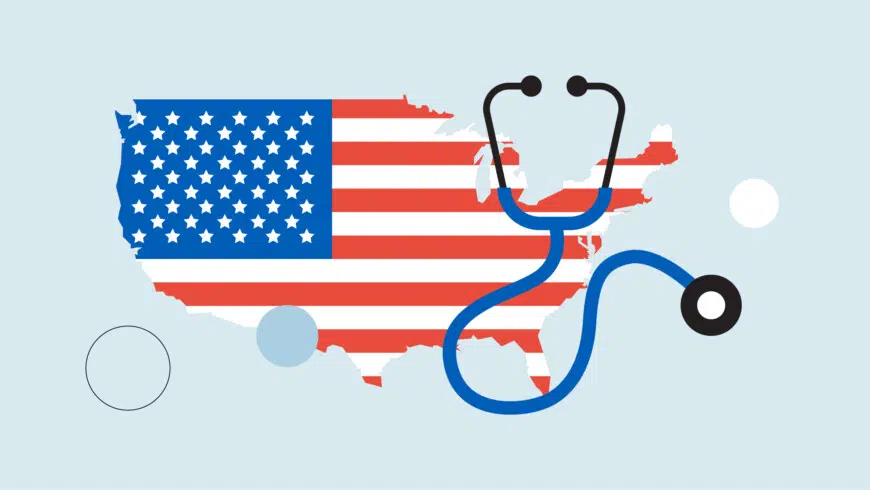
us healthcare system explained
US Healthcare System Explained
If you searched for us healthcare system explained, this article breaks down the basics in plain language. The U.S. health system is a complex mix of public programs, private insurers, employers, hospitals, and government agencies. This guide explains how the system is structured, who pays for care, the main public programs (Medicare and Medicaid), why costs are high, and practical tips for navigating coverage and care.
Overview: US healthcare system explained — a mixed system
When people ask us healthcare system explained, the short answer is that the U.S. uses a mixed public-and-private model. Federal programs (like Medicare and Medicaid) provide coverage for large groups, while private insurers — especially employer-sponsored plans — cover many working Americans. The Centers for Medicare & Medicaid Services (CMS) administers major federal programs and plays a central role in oversight and data collection. (Centers for Medicare & Medicaid Services)
How insurance works: employer plans, the ACA marketplaces, and individual policies
One of the first things to understand when looking for us healthcare system explained is how most people get insurance:
- Employer-sponsored insurance (ESI) is the largest single source of coverage for non-elderly Americans. Employers typically negotiate plans with insurers, and employees often share premium costs through payroll deductions. (KFF)
- Individual market and ACA marketplaces: People who do not have access to employer plans can buy coverage on state or federal marketplaces created under the Affordable Care Act (ACA). These marketplaces offer standardized plans and, for many low- and moderate-income people, premium tax credits that make coverage more affordable. (KFF)
- Uninsured: Despite these options, a portion of the population remains uninsured for reasons such as cost, ineligibility for subsidies, or gaps in outreach.
Medicare and Medicaid — the backbone of public coverage
A key part of any clear us healthcare system explained is understanding Medicare and Medicaid:
- Medicare is federal insurance primarily for people aged 65 and older and certain younger people with disabilities. Medicare has parts that cover hospital care (Part A), medical services (Part B), and prescription drugs (Part D). Many beneficiaries also choose Medicare Advantage (Part C) plans offered by private insurers. (Medicare)
- Medicaid is a joint federal-state program that provides coverage for people with low incomes; states set eligibility rules within federal guidelines. Medicaid often covers services that Medicare does not, such as long-term nursing-home care. Some people are “dual eligible” for both Medicare and Medicaid. (HHS.gov)
Who pays and why costs are high
Explaining us healthcare system explained requires addressing costs. Health care in the U.S. is relatively expensive compared with other wealthy countries. Several driving factors include higher prices for services and prescription drugs, administrative complexity from multiple payers, and rapidly advancing—but costly—medical technology. Private insurers tend to pay higher prices to providers than Medicare or Medicaid, and that contributes to overall spending growth. (KFF)
How care is delivered — providers, hospitals, and networks
Care delivery is shaped by hospitals, physician groups, clinics, and increasingly large health systems. Many insurers use networks: lists of doctors and hospitals that agree to contracted payment rates. Out-of-network care can be substantially more expensive, so understanding plan networks is a practical part of us healthcare system explained.
Access, gaps, and quality
The U.S. achieves high performance in many medical specialties and research, but access and affordability remain uneven. Rural hospital closures, coverage gaps, and high out-of-pocket costs for some patients create real barriers to care in parts of the country. Policy debates regularly focus on closing gaps, lowering drug prices, and increasing primary-care access. (The Guardian)
Practical tips — navigating the system (what you can do)
If you want the us healthcare system explained in actionable terms, here are steps to make the system work better for you:
- Know your coverage: Read your plan’s summary of benefits to learn what’s covered, your deductibles, copays, and network rules.
- Use preventive services: Many plans cover routine preventive care (vaccines, screenings) at low or no cost—check your plan.
- Shop for drugs and services: Compare prices (for non-emergency care) and ask about generic alternatives for prescriptions.
- Explore eligibility for public programs: If you’re low income, check Medicaid or ACA subsidy eligibility; if you’re 65+, learn Medicare enrollment rules. Federal and state websites, and nonprofit guides, can help. (KFF)
- Ask questions and appeal: If a claim is denied, insurers and Medicare have appeal processes; hospitals and providers often offer financial counseling for large bills.
Where to learn more — trusted sources
For anyone seeking us healthcare system explained, rely on primary, reputable sources:
- Centers for Medicare & Medicaid Services (CMS) for program details and statistics. (Centers for Medicare & Medicaid Services)
- Kaiser Family Foundation (KFF) for clear explainers on policy issues and coverage trends. (KFF)
- Medicare.gov and Medicaid.gov for enrollment rules and benefits. (Medicare)
Final takeaways
The us healthcare system explained boils down to a few core ideas: it’s a mixed public-private system, employer coverage and federal programs (Medicare and Medicaid) cover the largest shares of people, and costs are driven by prices, complexity, and innovation. For individuals, the best strategy is to understand your plan, check eligibility for public programs, and use preventive services to avoid costly care later.
Follow TNN for latest US NEWS TODAY!






